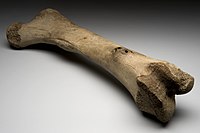
A Textile Platform Using Continuous Aligned and Textured Composite Microfibers to Engineer Tendon-to-Bone Interface Gradient Scaffolds.
Sign Up to like & getrecommendations! Published in 2019 at "Advanced healthcare materials"
DOI: 10.1002/adhm.201900200
Abstract: Tendon-to-bone interfaces exhibit a hierarchical multitissue transition. To replicate the progression from mineralized to nonmineralized tissue, a novel 3D fibrous scaffold is fabricated with spatial control over mineral distribution and cellular alignment. For this purpose,… read more here.
Keywords: pcl gelatin; pcl; gradient; tendon bone ... See more keywords

PCL/gelatin nanofibrous scaffolds with human endometrial stem cells/Schwann cells facilitate axon regeneration in spinal cord injury
Sign Up to like & getrecommendations! Published in 2019 at "Journal of Cellular Physiology"
DOI: 10.1002/jcp.27936
Abstract: The significant consequences of spinal cord injury (SCI) include sensory and motor disability resulting from the death of neuronal cells and axon degeneration. In this respect, overcoming the consequences of SCI including the recovery of… read more here.
Keywords: pcl gelatin; stem cells; cord injury; spinal cord ... See more keywords

An investigation into influence of acetylated cellulose nanofibers on properties of PCL/Gelatin electrospun nanofibrous scaffold for soft tissue engineering
Sign Up to like & getrecommendations! Published in 2021 at "Polymer"
DOI: 10.1016/j.polymer.2020.123313
Abstract: Abstract In this study, the effective role of incorporation of cellulose nanofibers (CNF) and modified acetylated cellulose nanofibers (ACNF) on mechanical, physical, and biological properties of poly (e-caprolactone) (PCL)/gelatin (Gel) electrospun nanofibrous scaffold was individually… read more here.
Keywords: soft tissue; cellulose nanofibers; electrospun nanofibrous; pcl gelatin ... See more keywords

A comparative study of monoaxial and coaxial PCL/gelatin/Poloxamer 188 scaffolds for bone tissue engineering
Sign Up to like & getrecommendations! Published in 2019 at "International Journal of Polymeric Materials and Polymeric Biomaterials"
DOI: 10.1080/00914037.2019.1581198
Abstract: Abstract Structure of fibrous scaffolds varies depending on the electrospinning method and parameters which will define cell fate. In this study, monoaxial and coaxial electrospun PCL/gelatin/P-188 scaffolds were characterized in terms of morphology, chemistry, mechanical… read more here.
Keywords: bone tissue; 188 scaffolds; study monoaxial; pcl gelatin ... See more keywords

PCL/Gelatin/Graphene Oxide Electrospun Nanofibers: Effect of Surface Functionalization on In Vitro and Antibacterial Response
Sign Up to like & getrecommendations! Published in 2023 at "Nanomaterials"
DOI: 10.3390/nano13030488
Abstract: The emergence of resistance to pathogenic bacteria has resulted from the misuse of antibiotics used in wound treatment. Therefore, nanomaterial-based agents can be used to overcome these limitations. In this study, polycaprolactone (PCL)/gelatin/graphene oxide electrospun… read more here.
Keywords: gelatin graphene; surface; pcl gelatin; surface functionalization ... See more keywords

Synthesis and Characterization of Exopolysaccharide Encapsulated PCL/Gelatin Skin Substitute for Full-Thickness Wound Regeneration
Sign Up to like & getrecommendations! Published in 2021 at "Polymers"
DOI: 10.3390/polym13060854
Abstract: Loss of skin integrity can lead to serious problems and even death. In this study, for the first time, the effect of exopolysaccharide (EPS) produced by cold-adapted yeast R. mucilaginosa sp. GUMS16 on a full-thickness… read more here.
Keywords: full thickness; thickness wound; skin; pcl gelatin ... See more keywords

Gelatin Blends Enhance Performance of Electrospun Polymeric Scaffolds in Comparison to Coating Protocols
Sign Up to like & getrecommendations! Published in 2022 at "Polymers"
DOI: 10.3390/polym14071311
Abstract: The electrospinning of hybrid polymers is a versatile fabrication technique which takes advantage of the biological properties of natural polymers and the mechanical properties of synthetic polymers. However, the literature is scarce when it comes… read more here.
Keywords: electrospun; comparison; pcl gelatin; gelatin blends ... See more keywords